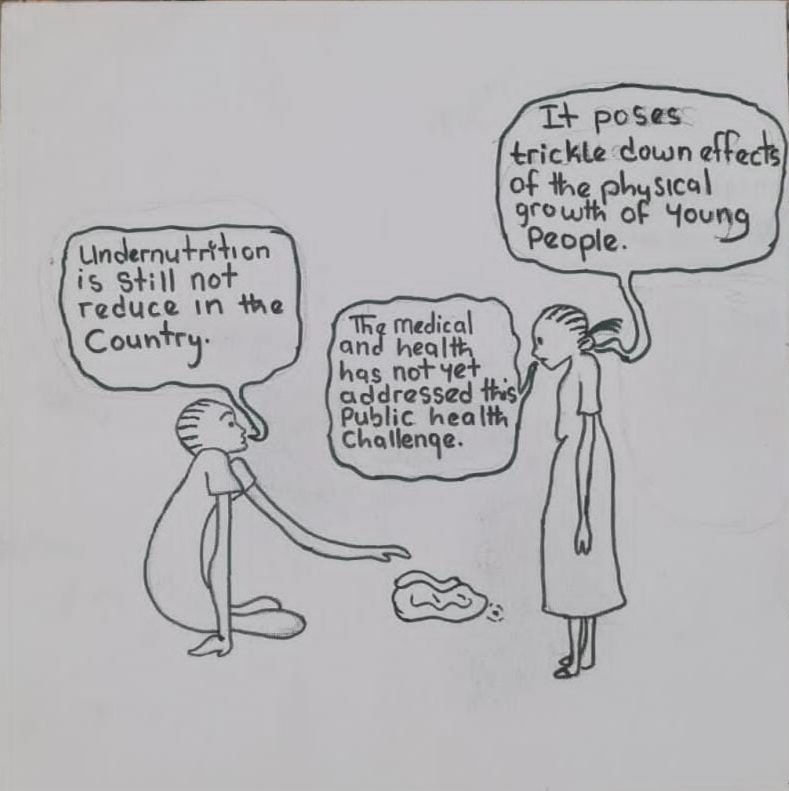By Sheriff Saidykhan
Over the past decades, the triple burden of malnutrition has contributed adversely to the underlying health of many young children and elderly people in the country.
This negative trend, still remains a public health challenge in the country, leaving many people with poor growth and acute health deficiency.
In The Gambia, undernutrition levels are not reduced as expected.
According to the Gambia National Demographic Health Survey reports for 2013 and 2019 showed that 25% of children under 5 years were stunted in 2013, and 18% in 2019. Also 12% were wasted in 2013 and 5% in 2019 while 16% and 12% were underweight in 2013 and 2019 respectively.
Malang Janneh, a nutrition field officer at the Kanifing General Hospital explained the conditions of Undernutrition in children.
“There are three classification of Undernutrition in children. For wasting, it is an acute condition, and its indicator is low weight for height. For a stunted child, it is low height for age. An indicator of long term chronic or past growth failure. Underweight is a composite of wasting and stunting. These conditions can be categorized as mild, moderate or severe malnutrition and can appear isolated.”
he said.
Fatou Darboe, Program Manager Nutrition and School Health Program at the Ministry of health said there’s a significant decline in both underweight and stunting.
“As a country, the trend showed that underweight and stunting prevalence continued to decline gradually but at a slow pace, however for wasting, ithas declined drastically but its prevalence is still unacceptable.” she said.
According to her undernutrition does not only cause mortality and morbidity but also contributes to physical and mental impairment in children.
“Some of the health and physical consequences of prolonged states of undernourishment among children are: delay in physical growth, decreased economic productivity, lower intellectual quotient, decreased reproductive performance, poor cognitive ability, poor school performance, greater behavioral problems and deficient social skills, and susceptibility to contracting diseases.” she said.
According to the World Health Organization (Who) about 47 million children under 5 years of age are found to be wasted, out of which14.3 million are severely wasted. One hundred and forty-four (144) million are stunted, while 38.3 million are overweight or obese.
According to World Health Organization around 45% of all deaths among children less than 5 years of age are attributed to undernutrition. This prevalence is higher in low and middle-income countries.
Haddy Crooks, Director of Nutrition Program Implementation at the National Nutrition Agency (NANA) said the agency has committed itself in the fight against the triple burden of malnutrition in the country.
“NANAʼs fight against malnutrition in all its forms (undernutrition, overnutrition and micronutrient deficiencies is centered on prevention and timely detection and treatment of acute malnutrition for children under five years, and identification of risk factors related to diet related non communicable disease.” she said.
The broad advocacy strategy of the agency she said, is through behavioral change communication. “Promoting activities for adoption of healthy nutrition behaviors through social and behavior change communication.” said Haddy Crooks.
Africa Centres for Disease Control and Prevention has called for concerted action, in the fight against public health emergencies facing the continent.






